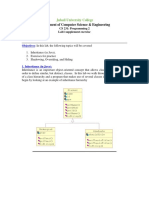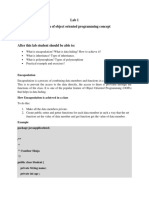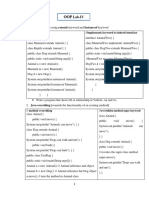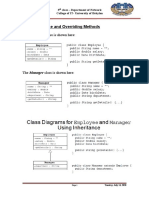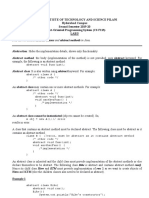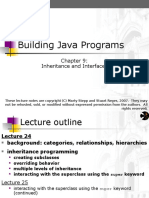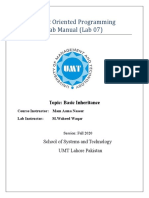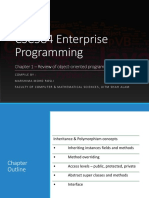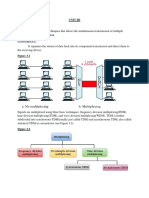0% found this document useful (0 votes)
4 views8 pagesInheritance
Inheritance and polymorphism guide for Object Oriented Programming.
Uploaded by
Muhammad Usman QasimCopyright
© © All Rights Reserved
We take content rights seriously. If you suspect this is your content, claim it here.
Available Formats
Download as PDF, TXT or read online on Scribd
0% found this document useful (0 votes)
4 views8 pagesInheritance
Inheritance and polymorphism guide for Object Oriented Programming.
Uploaded by
Muhammad Usman QasimCopyright
© © All Rights Reserved
We take content rights seriously. If you suspect this is your content, claim it here.
Available Formats
Download as PDF, TXT or read online on Scribd
/ 8












